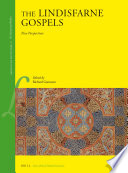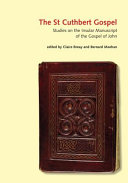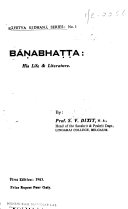Discover our guide to the best 7th century authors and get an intimate glimpse of this ancient time of literature.
The literature of the 7th century was diverse and flourished in several different cultures and languages despite a great deal of social and political turmoil. Life in the 7th century was quite different depending on where you lived in the world. It was a time of transition and change as various empires and cultures were in flux.
Table of Contents
Open Table of Contents
Here Are The 10 Best 7th Century Authors
1. Cædmon, 657 - 684
Eadfrith was an Anglo-Saxon bishop and scholar, best known as the scribe and illustrator of The Lindisfarne Gospels.The Lindisfarne Gospelsis a stunning manuscript from the early Middle Ages. It was created in the late 7th century by Eadfrith, who later became bishop of Lindisfarne in 698 and passed away in 721. It was already nearly 400 years old when the Domesday Book was compiled, 500 years old when the Magna Carta was signed, and more than 700 years old when Johannes Gutenberg invented the movable type printing press.
The Lindisfarne Gospels’ original leather binding, which has since been lost, was crafted by Ethelwald, Eadfrith’s successor as bishop. Later in the 8th century, it was adorned with jewels and precious metals by Billfrith, the Anchorite. Eadfrith is also credited with writing a preface to the Codex Amiatinus, the earliest known example of an Anglo-Saxon preface to a religious text. Eadfrith is renowned for his artistic abilities as a metalworker and illuminator, and several other surviving manuscripts are believed to have been written or illustrated by him.
3. Bāṇabhaṭṭa, unknown birth and death
Bāṇabhaṭṭa, or Bana, as he is commonly called, is considered to be one of the top three prose writers in classical Sanskrit. He lived during the late 6th and early 7th centuries AD. He is the author of Kadambari, a lyrical work of romantic prose that relates the story of the love between Kadambari, a princess of Gandharva, and Chandrapida. This prince is later revealed to be the God of The Moon. Considered a masterpiece of literature, it’s filled with vivid descriptive passages of forests, palaces, and landscapes and explores themes of love, separation, and unrequited love.
The book features an interesting parrot narrator and unfolds as an exciting romantic thriller set in the magical realms between this world and the other, where the mortal and divine seamlessly blend in idyllic splendor. His writing reflects a modern, humane, and sensitive perspective, particularly for the time period in which he lived in 7th-century India. Bana had a strong inclination towards challenging the established beliefs of his time. His literary strength lies in his storytelling abilities and ability to create characters with distinct personalities and vitality.
“But maturity of vision does not come even with age, and so how could it appear in youth? Only some fortunate ones have purity of conduct, keeping pace with the whitening of hair.”
Bāṇabhaṭṭa, Kadambari
4. Śāntideva, 685 - 763
Saint Gregory the Great became Pope in 590 and was known for his strong commitment to preserving Catholic Church teachings. He established multiple monasteries and a school for church music, where he developed the famous Gregorian chants. He was a monk, abbot, and prominent leader in Italy and played a key role in shaping Catholic theology, organization, and discipline. Gregory of Tours praised him for his exceptional grammar, eloquence, and dialectic skills.
Gregory’s most notable work is Dialogues. The book is a collection of four books documenting the miracles, signs, and healings performed by Italian saints. The second book, in particular, is a significant source of information on the life and character of St. Benedict, as it provides the earliest and most reliable account of Saint’s life.
“We make Idols of our concepts, but Wisdom is born of wonder.”
Pope Gregory I, GoodReads
6. Isidore of Seville, 560 - 636
John Climacus, also known as John of the Ladder, John Scholasticus, or John Sinaites, was a monk and ascetic in the Eastern Orthodox Church. He is best known for his work, The Ladder of Divine Ascent, a spiritual guide for monastics and laypeople. The book was originally written as a guide for monastics on the path to spiritual perfection. It consists of thirty steps, each representing a year in the life of Christ, the ultimate example of perfection.
The book was written for John, the Abbot of Raithu, a monastery on the Red Sea, and gained popularity in the Eastern Orthodox Church. It’s still widely read today, particularly during the Lenten season leading up to Easter, and is regarded as one of the most important works in Eastern Christian spirituality.
“Fight to escape from your own cleverness. If you do, then you will find salvation and uprightness through Jesus Christ our Lord.”
John Climacus, The Ladder of Divine Ascent
8. Hesiod, 750 - death unknown
Fredegar was a 7th-century Frankish chronicler and the author of the Chronica, a Latin chronicle of world history from the Creation to the 7th century. The chronicle is believed to have been written in the court of the Austrasian king, Dagobert I, and is an important source for the history of the Frankish kingdoms during the 7th century.
Fredegar’s chronicle is divided into four parts: the first part is a retelling of the biblical account of creation and the history of the world; the second part is a history of the Roman Empire; the third part covers the history of the Germanic tribes; and the fourth part covers the history of the Frankish kingdoms. The work is notable for its extensive use of earlier sources, including the Bible, Jerome’s Chronicle, and the History of the Franks by Gregory of Tours.
10. Meng Haoran, 689-740
Meng Haoran stands as one of the most beloved poets of China’s Tang Dynasty, representing the pinnacle of classical Chinese nature poetry and the contemplative tradition that would influence East Asian literature for centuries. Born during the golden age of Tang poetry, Meng chose a path that diverged dramatically from his contemporaries—while other poets sought fame and official positions at the imperial court, he deliberately withdrew from public life to pursue a hermit-like existence devoted to poetry, friendship, and communion with nature.
What makes Meng Haoran extraordinary is his ability to capture profound philosophical insights within seemingly simple observations of the natural world. His poems transform ordinary moments—a spring morning, the sound of rain on leaves, the sight of mountains shrouded in mist—into meditations on solitude, impermanence, and the deep connections between human consciousness and the natural environment. Unlike the more politically engaged poetry of his era, Meng’s work achieves its power through understatement and subtle emotional resonance. Meng’s friendship with Li Bai, perhaps China’s most famous poet, produced some of the most touching poems about literary brotherhood in Chinese literature. Their mutual admiration and poetic exchanges demonstrate how Meng’s quieter voice complemented Li Bai’s more exuberant style, creating a balance that enriched both their works. While Li Bai wrote of wine, wandering, and cosmic themes, Meng found the infinite within the intimate, discovering universal truths in small moments of natural beauty.
His rejection of official career opportunities—including deliberately avoiding a meeting with Emperor Xuanzong—reflects his commitment to artistic integrity over worldly success. This choice, which might have seemed like failure to his contemporaries, actually freed him to develop a poetic voice of remarkable purity and authenticity. His poems about rural retirement, seasonal changes, and the pleasures of simple living created a template for contemplative poetry that influenced not only Chinese literature but also Japanese and Korean poetic traditions.
Modern readers find in Meng Haoran a voice that speaks directly to contemporary concerns about finding meaning in a busy world, the value of simplicity, and the restorative power of nature. His poems offer a counterbalance to the noise and ambition of modern life, suggesting that wisdom often comes through quiet observation rather than grand gestures. In an age of environmental crisis and urban alienation, Meng’s celebration of natural harmony and seasonal rhythms feels both timeless and urgently relevant.




